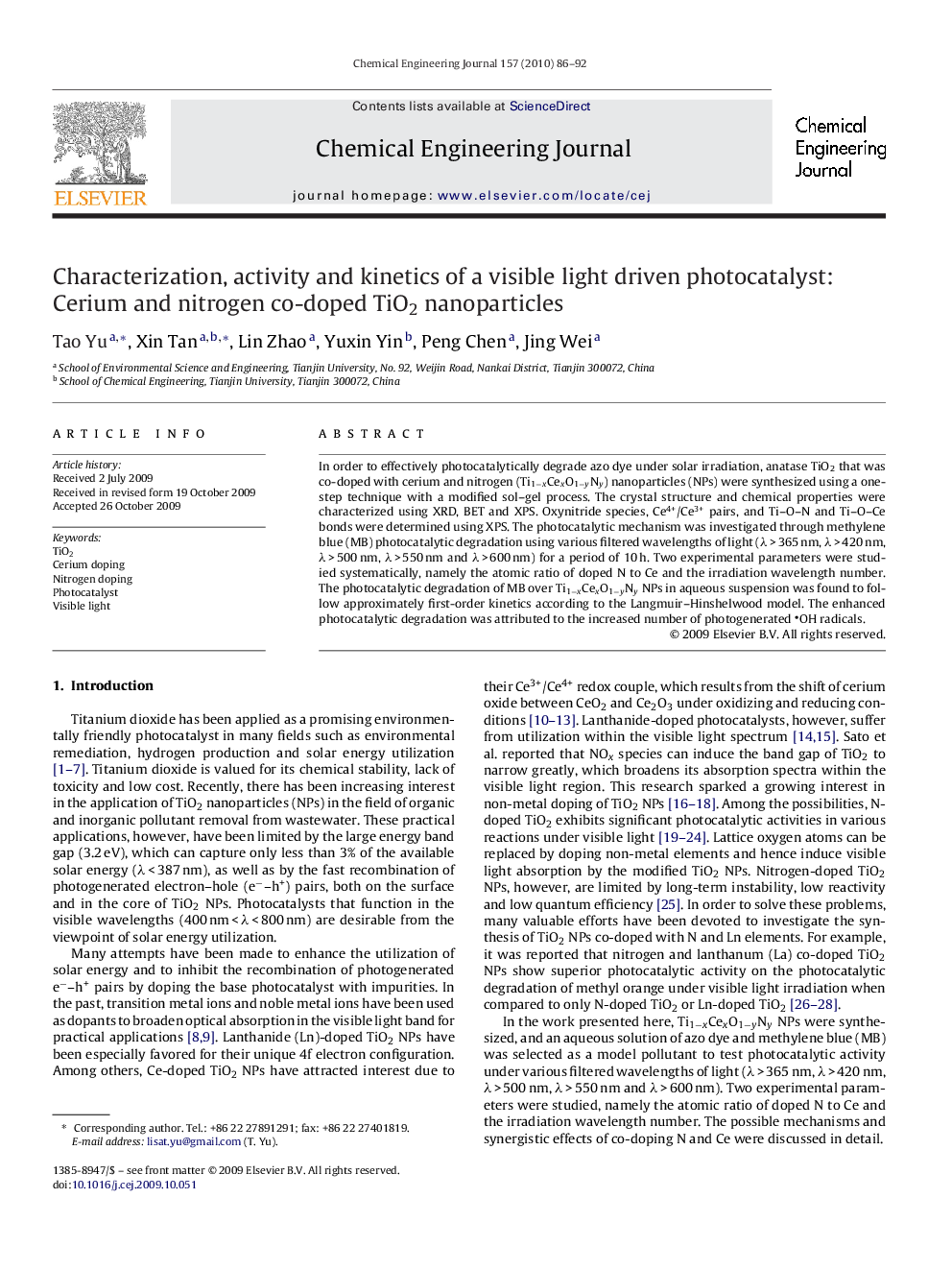| Article ID | Journal | Published Year | Pages | File Type |
|---|---|---|---|---|
| 152689 | Chemical Engineering Journal | 2010 | 7 Pages |
In order to effectively photocatalytically degrade azo dye under solar irradiation, anatase TiO2 that was co-doped with cerium and nitrogen (Ti1−xCexO1−yNy) nanoparticles (NPs) were synthesized using a one-step technique with a modified sol–gel process. The crystal structure and chemical properties were characterized using XRD, BET and XPS. Oxynitride species, Ce4+/Ce3+ pairs, and Ti–O–N and Ti–O–Ce bonds were determined using XPS. The photocatalytic mechanism was investigated through methylene blue (MB) photocatalytic degradation using various filtered wavelengths of light (λ > 365 nm, λ > 420 nm, λ > 500 nm, λ > 550 nm and λ > 600 nm) for a period of 10 h. Two experimental parameters were studied systematically, namely the atomic ratio of doped N to Ce and the irradiation wavelength number. The photocatalytic degradation of MB over Ti1−xCexO1−yNy NPs in aqueous suspension was found to follow approximately first-order kinetics according to the Langmuir–Hinshelwood model. The enhanced photocatalytic degradation was attributed to the increased number of photogenerated OH radicals.
